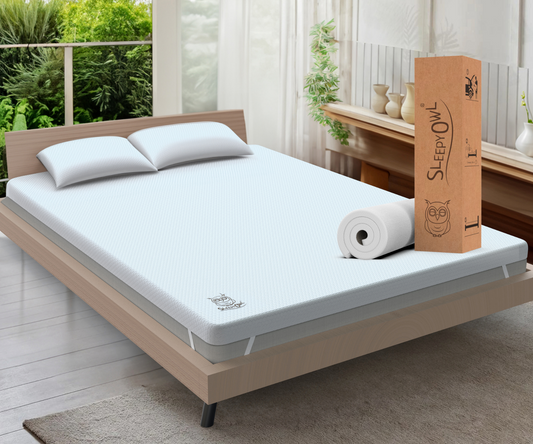What Type of Pillow is Best for a Child?
Selecting the appropriate pillow for a child is a decision that can significantly impact their overall health and well-being. Children spend a substantial amount of time sleeping, and the quality of their sleep can be influenced by various factors, including the type of pillow they use. A well-chosen pillow can promote proper spinal alignment, reduce the risk of developing neck and back pain, and enhance the quality of sleep.
Given that children are still growing, their bodies require adequate support during rest to ensure healthy development. The right pillow can help facilitate this by providing comfort and support tailored to their unique needs. Moreover, the choice of pillow can also affect a child's breathing patterns during sleep.
Pillows that are too high or too firm can lead to improper head positioning, which may obstruct airways and contribute to snoring or sleep apnea. Conversely, a pillow that is too flat may not provide sufficient support, leading to discomfort and restless nights. Therefore, understanding the importance of selecting the right pillow is crucial for parents who want to ensure their children enjoy restful and restorative sleep. Check out this amazing Memory Foam Mattress Topper for a better night's sleep.
Factors to Consider When Selecting a Pillow for a Child
When choosing a pillow for a child, several factors must be taken into account to ensure it meets their specific needs. One of the primary considerations is the child's age and size. Younger children typically require flatter pillows that provide minimal elevation, as their necks and spines are still developing.
As children grow, their needs may change, necessitating a thicker or firmer pillow to support their growing bodies. It is essential to assess the child's height and weight to select a pillow that offers appropriate support without compromising comfort. Another critical factor is the material of the pillow.
Different materials offer varying levels of support, breathability, and allergenic properties. For instance, synthetic materials may be more affordable but can trap heat and moisture, leading to discomfort during sleep. Natural materials like cotton or wool tend to be more breathable and hypoallergenic, making them suitable for children with allergies or sensitivities.
Additionally, parents should consider whether the pillow is machine washable or has removable covers for easy cleaning, as children's pillows can accumulate dust mites and other allergens over time.
Benefits of Memory Foam Pillows for Children
Memory foam pillows have gained popularity in recent years due to their unique properties that cater to individual sleep needs. One of the most significant benefits of memory foam is its ability to conform to the shape of the head and neck, providing personalized support. This feature is particularly advantageous for children, as it helps maintain proper spinal alignment while they sleep.
The adaptive nature of memory foam can alleviate pressure points, reducing discomfort and promoting deeper sleep. Furthermore, memory foam pillows often come with temperature-regulating properties that help keep children cool throughout the night. Many manufacturers incorporate gel-infused memory foam or breathable covers designed to dissipate heat, ensuring that children do not wake up feeling overheated.
This aspect is especially important for active children who may generate more body heat during sleep. By providing a comfortable sleeping environment, memory foam pillows can enhance sleep quality and contribute to better overall health.
Potential Drawbacks of Memory Foam Pillows for Children
Despite their numerous advantages, memory foam pillows are not without potential drawbacks when it comes to children's use. One concern is that memory foam can sometimes be too firm for younger children who may prefer a softer surface for their heads. This firmness can lead to discomfort if the pillow does not adequately cradle the child's head and neck.
Additionally, some children may find the initial odor associated with new memory foam products off-putting, as they can emit volatile organic compounds (VOCs) upon unboxing. Another consideration is the weight of memory foam pillows. They tend to be heavier than traditional pillows made from synthetic or natural materials, which can make it challenging for younger children to adjust or reposition them during sleep.
This weight may also pose a risk if a child rolls over onto their pillow during the night, potentially causing discomfort or obstructing airflow. Parents should weigh these factors against the benefits when deciding whether a memory foam pillow is suitable for their child.
Alternative Pillow Options for Children
For parents who may be hesitant about memory foam pillows, there are several alternative options available that cater to children's unique needs. One popular choice is polyester-filled pillows, which are lightweight and soft while providing adequate support. These pillows are often machine washable and come in various shapes and sizes, making them versatile options for different sleeping positions.
Polyester pillows are also generally more affordable than memory foam options, making them accessible for families on a budget. Another alternative is buckwheat pillows, which are filled with natural buckwheat hulls that conform to the shape of the head and neck while allowing for airflow. These pillows offer excellent support and are adjustable; parents can add or remove hulls to achieve the desired loft and firmness level.
Buckwheat pillows are also hypoallergenic and resistant to dust mites, making them suitable for children with allergies. However, they may be heavier than traditional pillows and have a unique texture that some children might find unfamiliar.
Tips for Maintaining a Child's Pillow
Proper maintenance of a child's pillow is essential to ensure its longevity and hygiene. Regular cleaning is crucial, as children's pillows can accumulate dust mites, allergens, and bacteria over time. Parents should check the care instructions provided by the manufacturer; many pillows come with removable covers that can be machine washed for easy maintenance.
For those without removable covers, spot cleaning with mild detergent and water can help keep the pillow fresh. In addition to regular washing, it is advisable to replace pillows every couple of years or sooner if they show signs of wear and tear. Over time, pillows can lose their shape and supportiveness, which may lead to discomfort during sleep.
Parents should also consider using pillow protectors that act as barriers against allergens and spills while extending the life of the pillow itself. These protectors are typically waterproof and machine washable, making them an excellent investment for maintaining hygiene.
When to Replace a Child's Pillow
Recognizing when to replace a child's pillow is vital for ensuring they continue to receive adequate support during sleep. Generally speaking, pillows should be replaced every 1-2 years; however, this timeline can vary based on usage and material quality. Signs that it may be time for a replacement include visible lumps or flattening of the pillow, which indicates that it has lost its ability to provide proper support.
If a child frequently complains about neck or back pain upon waking or shows signs of restless sleep, these could also be indicators that their pillow needs replacing. Additionally, parents should monitor any changes in their child's health or allergies that may necessitate a new pillow. For instance, if a child develops new allergies or sensitivities, it may be prudent to switch to hypoallergenic materials or different types of pillows altogether.
Regularly assessing the condition of a child's pillow ensures they have an optimal sleeping environment conducive to healthy growth and development.
Finding the Best Pillow for Your Child
Finding the best pillow for your child involves careful consideration of various factors such as age, size, material preferences, and specific health needs. The right pillow can significantly enhance your child's sleep quality while promoting proper spinal alignment and overall well-being. Whether opting for memory foam or exploring alternative options like polyester or buckwheat pillows, parents should prioritize comfort and support tailored to their child's unique requirements.
Ultimately, maintaining hygiene through regular cleaning and knowing when to replace a child's pillow are essential practices that contribute to a healthy sleeping environment. By investing time in selecting an appropriate pillow and ensuring its upkeep, parents can help foster better sleep habits in their children—an investment that pays dividends in their health and happiness as they grow.
FAQs
What are the different types of pillows for children?
There are several types of pillows for children, including memory foam pillows, down pillows, hypoallergenic pillows, and latex pillows. Each type has its own unique features and benefits.
What type of pillow is best for a child?
The best type of pillow for a child is one that provides proper support for their head and neck, is hypoallergenic, and is the right size for their smaller frame. It's important to consider the child's sleeping position and any allergies they may have when choosing a pillow.
What is the recommended pillow size for a child?
The recommended pillow size for a child is typically smaller than a standard adult pillow. A standard child's pillow size is usually around 16 inches by 22 inches, but it's important to choose a size that is appropriate for the child's age and size.
Are memory foam pillows safe for children?
Memory foam pillows can be safe for children as long as they are of high quality and are the right size and firmness for the child. It's important to ensure that the memory foam is CertiPUR-US certified, which means it has been tested for safety and performance.
How do I know if a pillow is hypoallergenic?
Hypoallergenic pillows are designed to minimize the risk of allergic reactions. Look for pillows that are labeled as hypoallergenic and made with materials such as cotton, bamboo, or polyester that are less likely to trigger allergies. It's also important to regularly wash and replace the pillow to reduce allergens.


